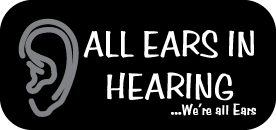Communication Strategies

Communication Tips for the Hearing Aid Wearer
Loop, Infrared and FM Systems.
Driving your car
At home
Attending lectures, meetings, church etc...
Move closer to the speaker
Repeat / Rephrase
At work
Stand In well-lit areas
Good lighting helps the face of the speaker to be seen clearly, making visual cues easier to be seen.
Specific questioning
Background noise
Using the telephone
Using the telephone when wearing hearing devices can be tricky to get used to. If you have a behind-the-ear instrument, hold the phone up higher than normal, as the microphone sits above your ear. If you have an in-the-ear instrument, hold the phone normally. If you are getting any whistling, move the handset slightly away from the instrument. For corded, land line phones, use the telecoil program on your hearing instrument and position the handset to get the best signal. In addition, there are many accessories available to help you use the phone more effectively such as a specialized volume control phone or for profoundly deaf people, a Telephone Typewriter (TTY). Contact All Ears in Hearing for further information and free demonstration.
Watching television
There is a huge range of TV listening devices out there for those who have difficulty hearing the television. Some devices even work in conjunction with your hearing aid, sending the signal directly to the hearing instrument. Infrared headphones are an excellent alternative to hearing aids for listening to the TV. The headphones will not interfere with the TV volume, so the whole family can watch TV together. Ask the staff at ALL EARS IN HEARING for further information and a free in clinic demonstration.
Dining out
Visual cues
Be assertive
Accessories
There are many accessories available to help speech understanding in a variety of listening situations such as restaurants, meetings, lectures, telephone and TV.
